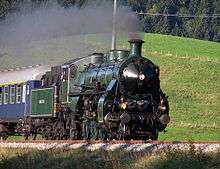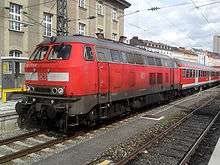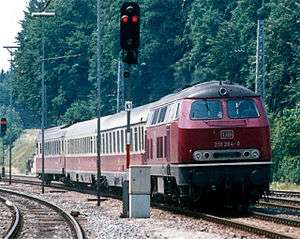Allgäu Railway (Bavaria)
| Munich–Lindau | ||||||||||||||||||||||||||||||||||||||||||||||||||||||||||||||||||||||||||||||||||||||||||||||||||||||||||||||||||||||||||||||||||||||||||||||||||||||||||||||||||||||||||||||||||||||||||||||||||||||||||||||||||||||||||||||||||||||||||||||||||||||||||||||||||||||||||||||||||||||||||||||||||||||||||||||||||||||||||||||||||||||||||||||||||||||||||||||||||||||||||||||||||||||||||||||||||||||||||||||||||||||||||||||||||||||||||||||||||||||||||||||||||||||||||||||||||||||||||||||||||||||||||||||||||||||||||||||||||||||||||||||||||||||||||||||||||||||||||||||||||||||||||||||||||||||||||||||||||||||||||||||||||||||||||||||||||||||||||||||||||||||||||||||||||||||||||||||||||||||||||||||||||||||||||||||||||||||||||||||||||||||||||||||||||||||||||||||||||||||||||||||||||||||||||||||||||||||||||||||||||||||||||||||||||||||||||||||||||||||||||||||||
|---|---|---|---|---|---|---|---|---|---|---|---|---|---|---|---|---|---|---|---|---|---|---|---|---|---|---|---|---|---|---|---|---|---|---|---|---|---|---|---|---|---|---|---|---|---|---|---|---|---|---|---|---|---|---|---|---|---|---|---|---|---|---|---|---|---|---|---|---|---|---|---|---|---|---|---|---|---|---|---|---|---|---|---|---|---|---|---|---|---|---|---|---|---|---|---|---|---|---|---|---|---|---|---|---|---|---|---|---|---|---|---|---|---|---|---|---|---|---|---|---|---|---|---|---|---|---|---|---|---|---|---|---|---|---|---|---|---|---|---|---|---|---|---|---|---|---|---|---|---|---|---|---|---|---|---|---|---|---|---|---|---|---|---|---|---|---|---|---|---|---|---|---|---|---|---|---|---|---|---|---|---|---|---|---|---|---|---|---|---|---|---|---|---|---|---|---|---|---|---|---|---|---|---|---|---|---|---|---|---|---|---|---|---|---|---|---|---|---|---|---|---|---|---|---|---|---|---|---|---|---|---|---|---|---|---|---|---|---|---|---|---|---|---|---|---|---|---|---|---|---|---|---|---|---|---|---|---|---|---|---|---|---|---|---|---|---|---|---|---|---|---|---|---|---|---|---|---|---|---|---|---|---|---|---|---|---|---|---|---|---|---|---|---|---|---|---|---|---|---|---|---|---|---|---|---|---|---|---|---|---|---|---|---|---|---|---|---|---|---|---|---|---|---|---|---|---|---|---|---|---|---|---|---|---|---|---|---|---|---|---|---|---|---|---|---|---|---|---|---|---|---|---|---|---|---|---|---|---|---|---|---|---|---|---|---|---|---|---|---|---|---|---|---|---|---|---|---|---|---|---|---|---|---|---|---|---|---|---|---|---|---|---|---|---|---|---|---|---|---|---|---|---|---|---|---|---|---|---|---|---|---|---|---|---|---|---|---|---|---|---|---|---|---|---|---|---|---|---|---|---|---|---|---|---|---|---|---|---|---|---|---|---|---|---|---|---|---|---|---|---|---|---|---|---|---|---|---|---|---|---|---|---|---|---|---|---|---|---|---|---|---|---|---|---|---|---|---|---|---|---|---|---|---|---|---|---|---|---|---|---|---|---|---|---|---|---|---|---|---|---|---|---|---|---|---|---|---|---|---|---|---|---|---|---|---|---|---|---|---|---|---|---|---|---|---|---|---|---|---|---|---|---|---|---|---|---|---|---|---|---|---|---|---|---|---|---|---|---|---|---|---|---|---|---|---|---|---|---|---|---|---|---|---|---|---|---|---|---|---|---|---|---|---|---|---|---|---|---|---|---|---|---|---|---|---|---|---|---|---|---|---|---|---|---|---|---|---|---|---|---|---|---|---|---|---|---|---|---|---|---|---|---|---|---|---|---|---|---|---|---|---|---|---|---|---|---|---|---|---|---|---|---|---|---|---|---|---|---|---|---|---|---|---|---|---|---|---|---|---|---|---|---|---|---|---|---|---|---|---|---|---|---|---|---|---|---|---|---|---|---|---|---|---|---|---|---|---|---|---|---|---|---|---|---|---|---|---|---|---|---|---|---|---|---|---|---|---|---|---|---|---|---|---|---|---|---|---|---|---|---|---|---|---|---|---|---|---|---|---|---|---|---|---|---|---|---|---|---|---|---|---|---|---|---|---|---|---|---|---|---|---|---|---|---|---|---|---|---|---|---|---|---|---|---|---|---|---|---|---|---|---|---|---|---|---|---|---|---|---|---|---|---|---|---|---|---|---|---|---|---|---|---|---|---|---|---|---|---|---|---|---|---|---|---|---|---|---|---|---|---|---|---|---|---|---|---|---|---|---|---|---|---|---|---|---|---|---|---|---|---|---|---|---|---|---|---|---|---|---|---|---|---|---|---|---|---|---|---|---|---|---|---|---|---|---|---|---|---|
|
Class 218 with TEE 66 in Geltendorf | ||||||||||||||||||||||||||||||||||||||||||||||||||||||||||||||||||||||||||||||||||||||||||||||||||||||||||||||||||||||||||||||||||||||||||||||||||||||||||||||||||||||||||||||||||||||||||||||||||||||||||||||||||||||||||||||||||||||||||||||||||||||||||||||||||||||||||||||||||||||||||||||||||||||||||||||||||||||||||||||||||||||||||||||||||||||||||||||||||||||||||||||||||||||||||||||||||||||||||||||||||||||||||||||||||||||||||||||||||||||||||||||||||||||||||||||||||||||||||||||||||||||||||||||||||||||||||||||||||||||||||||||||||||||||||||||||||||||||||||||||||||||||||||||||||||||||||||||||||||||||||||||||||||||||||||||||||||||||||||||||||||||||||||||||||||||||||||||||||||||||||||||||||||||||||||||||||||||||||||||||||||||||||||||||||||||||||||||||||||||||||||||||||||||||||||||||||||||||||||||||||||||||||||||||||||||||||||||||||||||||||||||||
| Overview | ||||||||||||||||||||||||||||||||||||||||||||||||||||||||||||||||||||||||||||||||||||||||||||||||||||||||||||||||||||||||||||||||||||||||||||||||||||||||||||||||||||||||||||||||||||||||||||||||||||||||||||||||||||||||||||||||||||||||||||||||||||||||||||||||||||||||||||||||||||||||||||||||||||||||||||||||||||||||||||||||||||||||||||||||||||||||||||||||||||||||||||||||||||||||||||||||||||||||||||||||||||||||||||||||||||||||||||||||||||||||||||||||||||||||||||||||||||||||||||||||||||||||||||||||||||||||||||||||||||||||||||||||||||||||||||||||||||||||||||||||||||||||||||||||||||||||||||||||||||||||||||||||||||||||||||||||||||||||||||||||||||||||||||||||||||||||||||||||||||||||||||||||||||||||||||||||||||||||||||||||||||||||||||||||||||||||||||||||||||||||||||||||||||||||||||||||||||||||||||||||||||||||||||||||||||||||||||||||||||||||||||||||
| Native name | Bayerische Allgäubahn | |||||||||||||||||||||||||||||||||||||||||||||||||||||||||||||||||||||||||||||||||||||||||||||||||||||||||||||||||||||||||||||||||||||||||||||||||||||||||||||||||||||||||||||||||||||||||||||||||||||||||||||||||||||||||||||||||||||||||||||||||||||||||||||||||||||||||||||||||||||||||||||||||||||||||||||||||||||||||||||||||||||||||||||||||||||||||||||||||||||||||||||||||||||||||||||||||||||||||||||||||||||||||||||||||||||||||||||||||||||||||||||||||||||||||||||||||||||||||||||||||||||||||||||||||||||||||||||||||||||||||||||||||||||||||||||||||||||||||||||||||||||||||||||||||||||||||||||||||||||||||||||||||||||||||||||||||||||||||||||||||||||||||||||||||||||||||||||||||||||||||||||||||||||||||||||||||||||||||||||||||||||||||||||||||||||||||||||||||||||||||||||||||||||||||||||||||||||||||||||||||||||||||||||||||||||||||||||||||||||||||||||||
| Locale | Bavaria, Germany | |||||||||||||||||||||||||||||||||||||||||||||||||||||||||||||||||||||||||||||||||||||||||||||||||||||||||||||||||||||||||||||||||||||||||||||||||||||||||||||||||||||||||||||||||||||||||||||||||||||||||||||||||||||||||||||||||||||||||||||||||||||||||||||||||||||||||||||||||||||||||||||||||||||||||||||||||||||||||||||||||||||||||||||||||||||||||||||||||||||||||||||||||||||||||||||||||||||||||||||||||||||||||||||||||||||||||||||||||||||||||||||||||||||||||||||||||||||||||||||||||||||||||||||||||||||||||||||||||||||||||||||||||||||||||||||||||||||||||||||||||||||||||||||||||||||||||||||||||||||||||||||||||||||||||||||||||||||||||||||||||||||||||||||||||||||||||||||||||||||||||||||||||||||||||||||||||||||||||||||||||||||||||||||||||||||||||||||||||||||||||||||||||||||||||||||||||||||||||||||||||||||||||||||||||||||||||||||||||||||||||||||||
| Line number |
| |||||||||||||||||||||||||||||||||||||||||||||||||||||||||||||||||||||||||||||||||||||||||||||||||||||||||||||||||||||||||||||||||||||||||||||||||||||||||||||||||||||||||||||||||||||||||||||||||||||||||||||||||||||||||||||||||||||||||||||||||||||||||||||||||||||||||||||||||||||||||||||||||||||||||||||||||||||||||||||||||||||||||||||||||||||||||||||||||||||||||||||||||||||||||||||||||||||||||||||||||||||||||||||||||||||||||||||||||||||||||||||||||||||||||||||||||||||||||||||||||||||||||||||||||||||||||||||||||||||||||||||||||||||||||||||||||||||||||||||||||||||||||||||||||||||||||||||||||||||||||||||||||||||||||||||||||||||||||||||||||||||||||||||||||||||||||||||||||||||||||||||||||||||||||||||||||||||||||||||||||||||||||||||||||||||||||||||||||||||||||||||||||||||||||||||||||||||||||||||||||||||||||||||||||||||||||||||||||||||||||||||||
| Technical | ||||||||||||||||||||||||||||||||||||||||||||||||||||||||||||||||||||||||||||||||||||||||||||||||||||||||||||||||||||||||||||||||||||||||||||||||||||||||||||||||||||||||||||||||||||||||||||||||||||||||||||||||||||||||||||||||||||||||||||||||||||||||||||||||||||||||||||||||||||||||||||||||||||||||||||||||||||||||||||||||||||||||||||||||||||||||||||||||||||||||||||||||||||||||||||||||||||||||||||||||||||||||||||||||||||||||||||||||||||||||||||||||||||||||||||||||||||||||||||||||||||||||||||||||||||||||||||||||||||||||||||||||||||||||||||||||||||||||||||||||||||||||||||||||||||||||||||||||||||||||||||||||||||||||||||||||||||||||||||||||||||||||||||||||||||||||||||||||||||||||||||||||||||||||||||||||||||||||||||||||||||||||||||||||||||||||||||||||||||||||||||||||||||||||||||||||||||||||||||||||||||||||||||||||||||||||||||||||||||||||||||||||
| Line length | 220.9 km (137.3 mi) | |||||||||||||||||||||||||||||||||||||||||||||||||||||||||||||||||||||||||||||||||||||||||||||||||||||||||||||||||||||||||||||||||||||||||||||||||||||||||||||||||||||||||||||||||||||||||||||||||||||||||||||||||||||||||||||||||||||||||||||||||||||||||||||||||||||||||||||||||||||||||||||||||||||||||||||||||||||||||||||||||||||||||||||||||||||||||||||||||||||||||||||||||||||||||||||||||||||||||||||||||||||||||||||||||||||||||||||||||||||||||||||||||||||||||||||||||||||||||||||||||||||||||||||||||||||||||||||||||||||||||||||||||||||||||||||||||||||||||||||||||||||||||||||||||||||||||||||||||||||||||||||||||||||||||||||||||||||||||||||||||||||||||||||||||||||||||||||||||||||||||||||||||||||||||||||||||||||||||||||||||||||||||||||||||||||||||||||||||||||||||||||||||||||||||||||||||||||||||||||||||||||||||||||||||||||||||||||||||||||||||||||||
| Track gauge | 1,435 mm (4 ft 8 1⁄2 in) | |||||||||||||||||||||||||||||||||||||||||||||||||||||||||||||||||||||||||||||||||||||||||||||||||||||||||||||||||||||||||||||||||||||||||||||||||||||||||||||||||||||||||||||||||||||||||||||||||||||||||||||||||||||||||||||||||||||||||||||||||||||||||||||||||||||||||||||||||||||||||||||||||||||||||||||||||||||||||||||||||||||||||||||||||||||||||||||||||||||||||||||||||||||||||||||||||||||||||||||||||||||||||||||||||||||||||||||||||||||||||||||||||||||||||||||||||||||||||||||||||||||||||||||||||||||||||||||||||||||||||||||||||||||||||||||||||||||||||||||||||||||||||||||||||||||||||||||||||||||||||||||||||||||||||||||||||||||||||||||||||||||||||||||||||||||||||||||||||||||||||||||||||||||||||||||||||||||||||||||||||||||||||||||||||||||||||||||||||||||||||||||||||||||||||||||||||||||||||||||||||||||||||||||||||||||||||||||||||||||||||||||||
| Electrification | 15 kV/16.7 Hz AC catenary (only 42.1 km to Geltendorf) | |||||||||||||||||||||||||||||||||||||||||||||||||||||||||||||||||||||||||||||||||||||||||||||||||||||||||||||||||||||||||||||||||||||||||||||||||||||||||||||||||||||||||||||||||||||||||||||||||||||||||||||||||||||||||||||||||||||||||||||||||||||||||||||||||||||||||||||||||||||||||||||||||||||||||||||||||||||||||||||||||||||||||||||||||||||||||||||||||||||||||||||||||||||||||||||||||||||||||||||||||||||||||||||||||||||||||||||||||||||||||||||||||||||||||||||||||||||||||||||||||||||||||||||||||||||||||||||||||||||||||||||||||||||||||||||||||||||||||||||||||||||||||||||||||||||||||||||||||||||||||||||||||||||||||||||||||||||||||||||||||||||||||||||||||||||||||||||||||||||||||||||||||||||||||||||||||||||||||||||||||||||||||||||||||||||||||||||||||||||||||||||||||||||||||||||||||||||||||||||||||||||||||||||||||||||||||||||||||||||||||||||||
| Operating speed | 160 km/h (99 mph) | |||||||||||||||||||||||||||||||||||||||||||||||||||||||||||||||||||||||||||||||||||||||||||||||||||||||||||||||||||||||||||||||||||||||||||||||||||||||||||||||||||||||||||||||||||||||||||||||||||||||||||||||||||||||||||||||||||||||||||||||||||||||||||||||||||||||||||||||||||||||||||||||||||||||||||||||||||||||||||||||||||||||||||||||||||||||||||||||||||||||||||||||||||||||||||||||||||||||||||||||||||||||||||||||||||||||||||||||||||||||||||||||||||||||||||||||||||||||||||||||||||||||||||||||||||||||||||||||||||||||||||||||||||||||||||||||||||||||||||||||||||||||||||||||||||||||||||||||||||||||||||||||||||||||||||||||||||||||||||||||||||||||||||||||||||||||||||||||||||||||||||||||||||||||||||||||||||||||||||||||||||||||||||||||||||||||||||||||||||||||||||||||||||||||||||||||||||||||||||||||||||||||||||||||||||||||||||||||||||||||||||||||
| Route number | 970 | |||||||||||||||||||||||||||||||||||||||||||||||||||||||||||||||||||||||||||||||||||||||||||||||||||||||||||||||||||||||||||||||||||||||||||||||||||||||||||||||||||||||||||||||||||||||||||||||||||||||||||||||||||||||||||||||||||||||||||||||||||||||||||||||||||||||||||||||||||||||||||||||||||||||||||||||||||||||||||||||||||||||||||||||||||||||||||||||||||||||||||||||||||||||||||||||||||||||||||||||||||||||||||||||||||||||||||||||||||||||||||||||||||||||||||||||||||||||||||||||||||||||||||||||||||||||||||||||||||||||||||||||||||||||||||||||||||||||||||||||||||||||||||||||||||||||||||||||||||||||||||||||||||||||||||||||||||||||||||||||||||||||||||||||||||||||||||||||||||||||||||||||||||||||||||||||||||||||||||||||||||||||||||||||||||||||||||||||||||||||||||||||||||||||||||||||||||||||||||||||||||||||||||||||||||||||||||||||||||||||||||||||
| ||||||||||||||||||||||||||||||||||||||||||||||||||||||||||||||||||||||||||||||||||||||||||||||||||||||||||||||||||||||||||||||||||||||||||||||||||||||||||||||||||||||||||||||||||||||||||||||||||||||||||||||||||||||||||||||||||||||||||||||||||||||||||||||||||||||||||||||||||||||||||||||||||||||||||||||||||||||||||||||||||||||||||||||||||||||||||||||||||||||||||||||||||||||||||||||||||||||||||||||||||||||||||||||||||||||||||||||||||||||||||||||||||||||||||||||||||||||||||||||||||||||||||||||||||||||||||||||||||||||||||||||||||||||||||||||||||||||||||||||||||||||||||||||||||||||||||||||||||||||||||||||||||||||||||||||||||||||||||||||||||||||||||||||||||||||||||||||||||||||||||||||||||||||||||||||||||||||||||||||||||||||||||||||||||||||||||||||||||||||||||||||||||||||||||||||||||||||||||||||||||||||||||||||||||||||||||||||||||||||||||||||||
The Bavarian Allgäu railway (German: Bayerische Allgäubahn) is a railway line in the German state of Bavaria, running from Munich to Lindau via Buchloe, Kaufbeuren and Kempten. The southern part of the line runs through the Allgäu region. The section from Buchloe to Lindau was built as part of the Ludwig South-North Railway, one of the oldest lines in Germany.
Construction and operational history
The 56.18 km-long section of the line from Munich to Kaufering via Pasing and Geltendorf was opened on 1 May 1873. The 11.81 km-long section from Kaufering to Buchloe was opened on 1 November 1872. The 20.3 km-long section from Buchloe to Kaufbeuren were opened on 1 September 1847 as part of the Ludwig South-North Railway from Hof via Augsburg. This was followed by the opening of the 42.52 km-long section to the former terminal station of Kempten on 1 May 1852. The 21.66 km-long section to Immenstadt was added on 1 May 1853. The 16.85 km-long section to Oberstaufen was opened on 1 September 1853 and the final 51.51 km-long section to Lindau opened on 12 October 1853.[3] The line was originally single-track, but its duplication was completed in 1907. The only section of the line yet electrified is the 42.1 km-long section between Munich and Geltendorf, which is operated as part of the Munich S-Bahn.

Until the mid-1960s, when V200 diesel locomotives were introduced, reducing the travel time between Munich and Lindau by about 30 minutes, the Allgäu line was worked by steam locomotives. High-quality and international express services were hauled by Bavarian S 3/6 (later DB Class 18.4-5) for many decades.
Rail-road buses were used between 23 May 1954 and 31 May 1958, running via rail from Augsburg to Pforzen, Biessenhofen and Roßhaupten, where they transferred to road to continue to Füssen.
Heimenkirch station was reactivated at the timetable change on 12 December 2010. It is served mainly by Regional-Express trains to/from Augsburg/Nuremberg and Kempten/Memmingen/Ulm. It is also served by only a few alex services.
Operations
Regional services

All remaining stations on the Allgäu line have at least hourly services, except Günzach, where trains run only two hours. In addition to the alex service from Munich to Lindau, which runs every two hours, supplementary services operate on various sections of the route:
- Munich-Geltendorf: S-Bahn services every 20 or 40 minutes
- Munich–Buchloe: Munich–Memmingen route every two hours
- Munich–Buchloe/Kaufbeuren route every two hours
- Munich–Biessenhofen: Munich–Füssen route every two hours
- Buchloe–Biessenhofen: Augsburg–Füssen route every two hours
- Munich–Immenstadt: some coaches attached to the Munich–Lindau alex service (running every two hours) are detached at Immenstadt to run to Oberstdorf.
- Kempten–Immenstadt: Ulm–Oberstdorf route every two hours
- Kempten–Lindau: Ulm–Lindau route every two hours
- Hergatz–Lindau: Augsburg–Lindau route every two hours (on weekends)
- Buchloe–Lindau: Nuremberg–Lindau route (four pairs of trains) and Nuremberg–Kempten (one pair)
Long-distance traffic
Trans-Europ-Express Bavaria
A Trans-Europ-Express (first class only) service was introduced in the 1969/70 winter timetable, running on the Munich–Lindau–Bregenz–St. Margrethen–St. Gallen–Winterthur–Zurich (lines 56 and 57), called Bavaria. On the evening of 9 February 1971 a TEE 56 service derailed on the Munich–Zurich route at Aitrang due to speeding, killing 28 people and seriously injuring 42. In 1977, the TEE service was replaced by a "D" (two-class express) service between Zurich and Munich (lines 276 and 277).
EuroCity traffic
EuroCity trains have operated on the line since the introduction of the train type in 1987. Four pairs of EuroCity trains run daily between Munich and Zurich, but they have not had names since 2002. Since the beginning of the 1990s, most EuroCity trains between Munich and Zurich have run via Memmingen to Lindau; currently only a single EuroCity train pair runs via Kempten (trains 196 and 197).
There is also a daily Intercity train pair between Hamburg and Oberstdorf that uses the Buchloe–Immenstadt section of the Allgäu Line. Another InterCity train runs between Magdeburg and Oberstdorf, using the Allgäu line only between Kempten and Immenstadt.
InterCity Express
The German EuroCity trains on the line were replaced by ICE TD (class 605) diesel multiple units in 2001/2002 on the Munich–Lindau–St. Gallen–Zurich route. These trains from the start, however, had significant deficiencies that were resolved only gradually. After 24 July 2003, the authorisation for the series to run on the line was cancelled and EuroCity trains were reintroduced.
Freight traffic
The line is no longer a significant route for international freight. It serves as an important detour route around the Austrian Arlberg railway during disruptions, requiring diesel haulage.
On the line are still some companies that are served several times a week by rail.
Prospects
Allgäu rail project
The Allgäu rail project was launched some years ago to upgrade the line for tilting, which went into service at the December 2011 change of timetable cutting travel time from Lindau to Augsburg by half an hour.
Development of the alternative route via Memmingen and Kißlegg
On 15 February 2008, the German Federal Minister of Transport, Wolfgang Tiefensee and his Swiss counterpart, Moritz Leuenberger signed in Memmingen a Memorandum of Understanding in relation to the development of the Munich–Lindau route, including the electrification of the section between Geltendorf and Lindau Aeschach.[4] This statement was followed on 18 December 2008 by a financial agreement.
However, this is not concerned with the Kaufbeuren–Kempten–Immenstadt line, but the alternative route via Memmingen and Kißlegg (Buchloe–Memmingen, Leutkirch–Memmingen, Württemberg Allgäu and Kißlegg–Hergatz lines). This means that the Bavarian Allgäu line of would only benefit by the electrification of the Geltendorf–Buchloe (26 kilometres) and the Hergatz–Lindau (23 kilometres) sections. This means that the current sparse international connections on the Allgäu line via Kempten will eventually be lost entirely. International long distance trains will run through a newly built station in Lindau-Reutin, avoiding the Lindau Hauptbahnhof, which is a terminal station, requiring reversals. The number of tracks of this station will then be reduced.
The electrification of the line and its upgrade for tilting trains was originally estimated to cost the federal government about € 210 million. Bavaria would provide finance of € 55 million and Switzerland would have granted an interest-free loan of € 50 million. The Swiss loan in expected to be granted in spite of the delay as the deadline for all access routes of the Gotthard Base Tunnel has been extended by five years. On 18 October 2012, Deutsche Bahn announced that the start of construction would be delayed indefinitely because of unexpected increases in costs of € 88 million, raising total costs to € 298 million. As a result, there would have to be new funding negotiations. Moreover, Deutsche Bahn does not currently have a long-distance train that is equipped with tilting technology and is approved to run on this route. So rolling stock using Swiss technology would be allowed to operate on the route.[5]
Sources
Notes
- ↑ "Tunnel portals on line 5362" (in German). Tunnelportale. Retrieved 17 January 2013.
- ↑ Eisenbahnatlas Deutschland (German railway atlas). Schweers + Wall. 2009. ISBN 978-3-89494-139-0.
- ↑ "Geschichtliche Entwicklung der (Historical development of the) KBS 970" (in German). Die Allgäubahn. Retrieved 15 August 2010.
- ↑ "Schritt zu einem kürzeren Weg nach München (Step to a shorter route to Munich)" (in German). NZZ Online. Retrieved 15 August 2010.
- ↑ Aimée Jajes (19 October 2012). "Elektrifizierung der Strecke München-Lindau wieder verschoben". Augsburger Allgemeine (in German). Retrieved 17 January 2013.
References
- Handbuch der deutschen Eisenbahnstrecken (Handbook of German railways) (in German). Dumjahn. 1984. ISBN 3-921426-29-4.
- Bufe, Siegfried (1991). Allgäubahn, München - Kempten - Lindau (Allgäu Railway) (in German). Egglham. ISBN 3-922138-41-1.
- "Kursbuchstrecke 970" (in German). Die Allgäubahn. Retrieved 15 August 2010.
